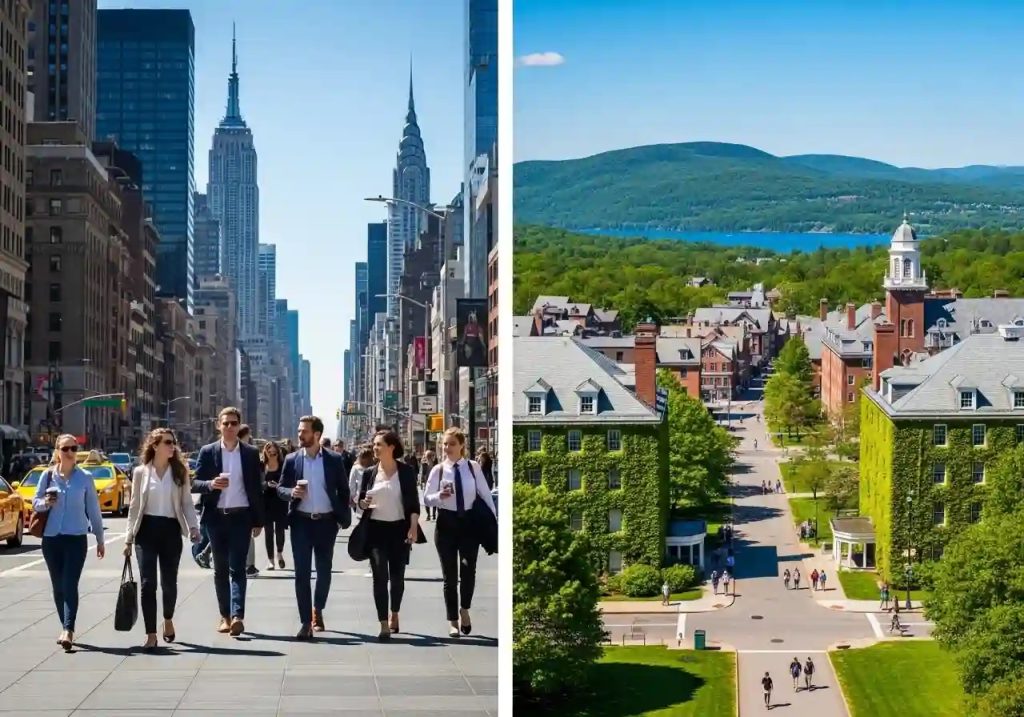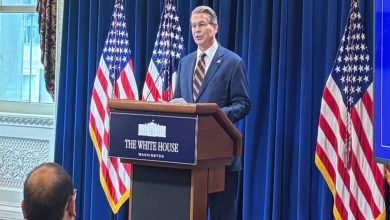How New York Is Retaining Its Young Adult Population Amid Economic and Social Shifts
Urban hubs attract young adults through jobs, culture, and education, while upstate regions face challenges of cost, demographics, and migration.

New York State has largely succeeded in retaining its young adult population, ages 18 to 34, despite facing many economic and social shifts. While vibrant urban centers continue to attract and hold onto young residents through strong job markets and diverse cultural offerings, some upstate regions struggle with unique challenges, including high living costs and internal migration.
Urban areas in New York have maintained their young adult populations in recent years, thanks to a combination of factors: a strong labor market, renewed immigration, vibrant cultural life, diverse communities, and excellent higher education. Together, these elements make the state attractive to young individuals seeking opportunities and a dynamic lifestyle.
Still, challenges remain. Like much of the country, New York faces declining birth rates, rising living costs, and internal migration—all of which could shrink its labor force and make the state less appealing for businesses and investment, particularly in upstate regions.

New York Struggles to Retain Young Adults
Between 2019 and 2024, Binghamton was the only metro area in the state to see even a slight increase in young adults, largely due to the expansion of Binghamton University. By contrast, Watertown saw notable declines, driven in part by changes in its largely military population. Most other metro areas in New York reported modest decreases in young adult shares.
A shrinking youth population can negatively impact New York’s economy by reducing the available labor pool. Employers uncertain about workforce supply may look instead to states like Florida or Texas. Even as immigrants move into areas like Albany and Schenectady, falling birth rates and internal migration still outweigh these arrivals.
The experiences of young residents highlight these dynamics. Andy Hu, 24, who has lived in New York City and Buffalo, ultimately settled in Albany. He finds Albany more family-oriented but less exciting than New York City, and he notices a different startup environment compared to Buffalo. He praises Buffalo for its financial and tech sectors, diverse communities, proximity to Canada, and affordable living, while noting that Albany offers government jobs but lacks the energy many young people seek.
Excelsior Scholarship Aims to Keep Young Professionals in New York
To proactively retain young adults, New York launched the Excelsior Scholarship in 2017. The program offers free tuition for eligible middle-class families, requiring graduates to live and work in the state for the same number of years they received aid. The goal is to anchor young professionals in New York during the critical five to ten years after graduation, a period when many set career paths and consider starting families.
Recent data shows that the share of young adults in New York’s five largest metro areas—New York City, Buffalo, Rochester, the Capital Region, and Kiryas Joel–Poughkeepsie–Newburgh—has remained relatively stable since 2019. Experts view this stability as a positive sign, suggesting that state-led programs are working, especially in upstate areas. Affordability in upstate regions compared to New York City also plays an important role, as housing costs strongly affect this demographic.
However, even in upstate regions, housing costs have risen since 2020, prompting many young adults to return to family homes in suburban or rural areas instead of moving to urban centers—potentially contributing to future losses of young urban residents. Beyond financial factors, younger generations’ social habits have shifted: they are often less socially active in traditional ways and spend more time online. Influenced by social media, their motivations for moving to cities differ from previous generations, possibly explaining the slight overall decline in young adult shares.

Capital Region Holds Steady but Faces Demographic Challenges
The Capital Region, for example, maintained a relatively stable share of young adults in 2024. Albany recorded the highest share at about 30%, while Saratoga had the lowest, at around one-fifth of its population. Demographics in areas like Rensselaer and Saratoga counties—home to retirees and families with older parents and younger children—contribute to the lower shares of young adults. Strong infrastructure, including highways and rail, helps the Capital Region integrate with the broader New York metro area, making it more attractive than other upstate areas with less direct access to New York City.
To further strengthen retention, experts recommend additional investments in programs like “New New Yorkers Leaders” training to better connect graduates with local jobs. Expanding higher education institutions to rural areas—such as establishing more medical and graduate schools in smaller communities—could encourage students to settle in the regions where they study. While progress has been made, sustained effort is essential for New York to fully realize its potential in keeping its vital young adult population.



